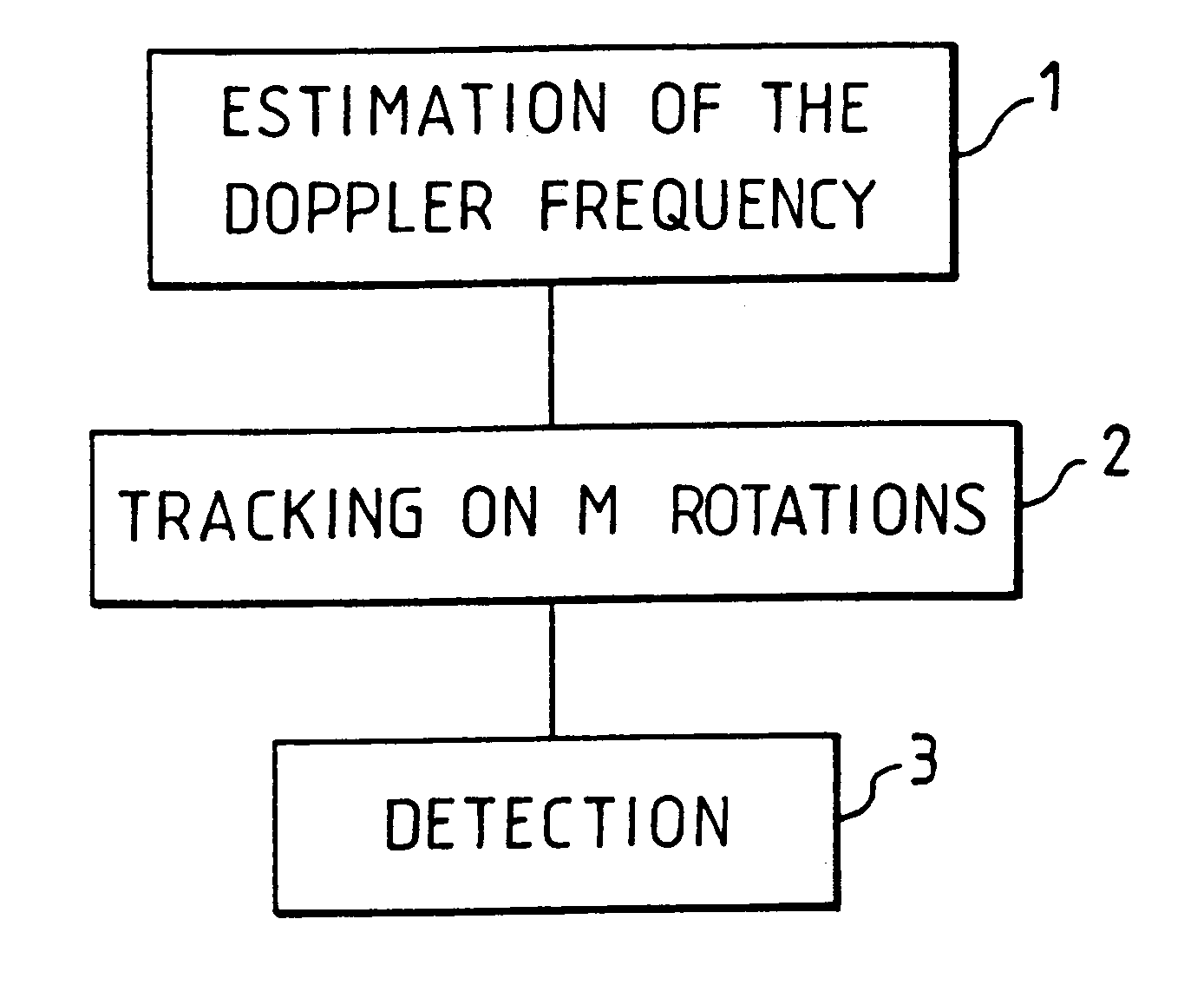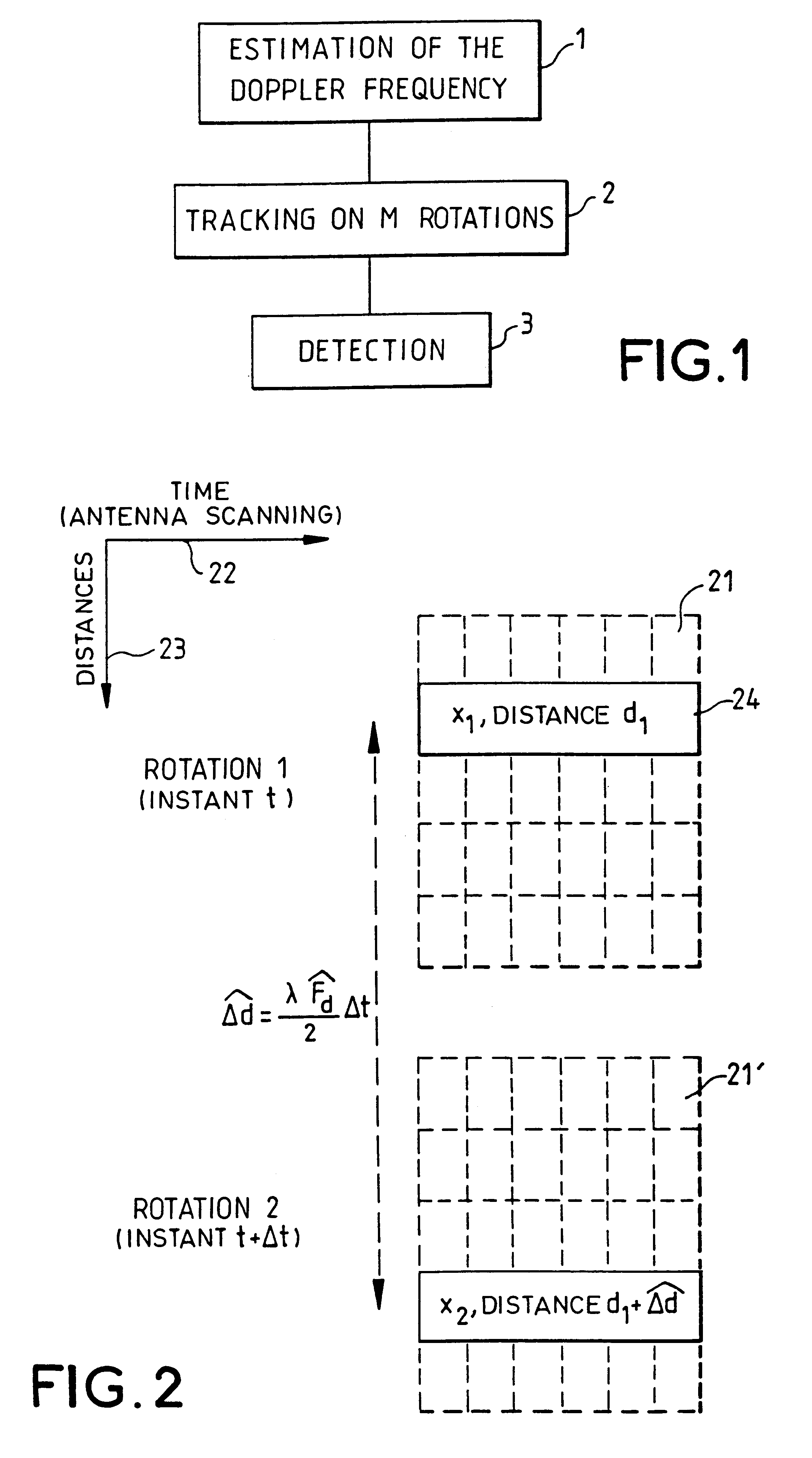Method for the detection especially of small sea targets
a detection method and technology for small sea targets, applied in the field of detection methods for especially small sea targets, can solve the problems of limited computation time and complexity of detection algorithms, inability to perform processing or phases, and inability to perform standard doppler processing operations
- Summary
- Abstract
- Description
- Claims
- Application Information
AI Technical Summary
Problems solved by technology
Method used
Image
Examples
Embodiment Construction
FIG. 1 shows the different possible steps of the method according to the invention. The method comprises a first step 1 for the estimation of the Doppler frequency. In this step, the Doppler frequency is estimated for each candidate target of an analyzed antenna rotation, namely for each antenna lobe, according to the known criterion of generalized maximum likelihood. The clutter is supposed to be white, namely this first step may follow a possible step of whitening of the clutter. It is assumed in this case that this possible step has had little effect on the shape of the echo of a target x(t) defined by the following relationship (1):
x(t)=.alpha.s(t) (1)
where .alpha. is an unknown complex parameter and s(t) verifies the following relationship:
s(t)=a(t)e.sup.j2.pi.F.sup..sub.d .sup.t (2)
F.sub.d being the unknown complex frequency, a(t) being a known real vector that modulates the amplitude of the target and t representing time.
If we consider the sampled values, namely considering t...
PUM
 Login to View More
Login to View More Abstract
Description
Claims
Application Information
 Login to View More
Login to View More - R&D
- Intellectual Property
- Life Sciences
- Materials
- Tech Scout
- Unparalleled Data Quality
- Higher Quality Content
- 60% Fewer Hallucinations
Browse by: Latest US Patents, China's latest patents, Technical Efficacy Thesaurus, Application Domain, Technology Topic, Popular Technical Reports.
© 2025 PatSnap. All rights reserved.Legal|Privacy policy|Modern Slavery Act Transparency Statement|Sitemap|About US| Contact US: help@patsnap.com



